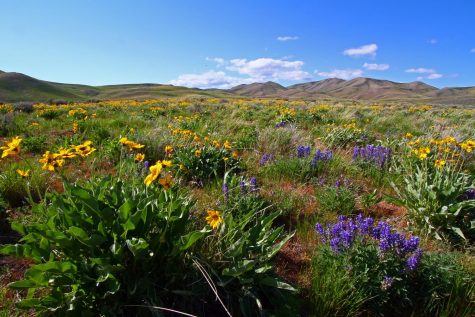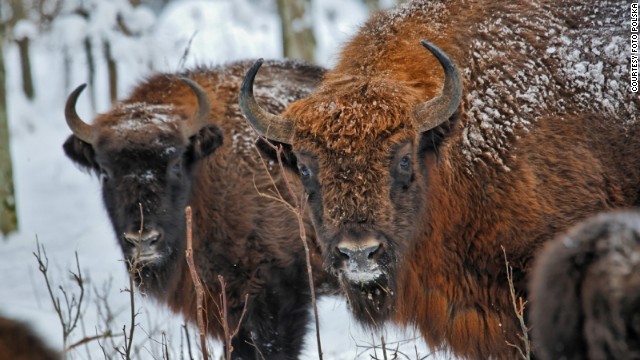First Birth of Wild Bison in U.K in 6,000 Years: The International Fight for Species Restoration
November 7, 2022
For the first time in six millennia, a wild bison was born in the United Kingdom on Sept. 9 of this year. The Wilder Blean project, an organization working in Kent’s West Blean and Thornden Woods to restore wildlife to the area, is hopeful not only for the growing bison herd’s survival but for their positive impact on the climate crisis.
Tom Gibbs, the ranger who first discovered the baby bison, described the birth as a “magical moment” and “so iconic [in] what it represents for conservation and wilding in this country.”
Paul Hadway, Director of Conservation of the Kent Wildlife Trust, said that this is “an exciting development within a pioneering project.” Calling European bison an “incredible” species, Hadway said that “to think that their numbers now swell beyond 9,000 is a true testament to the commitment and dedication of international breeding efforts.”
The birth was a complete surprise for the rangers because, as prey animals, bison conceal their pregnancies as a protective mechanism against predators. Gibbs did not even realize that Female 2, the mother of the new bison, was pregnant until she left the herd for several days to give birth.
The new bison is the fourth member of the bison herd at Wilder Blean after three female bison were released into the wild this year . They, including Female 2, were transported from wildlife trusts in Ireland and Scotland to Kent in July 2022. The bison at Wilder Blean are soon to be joined by wild pigs and horses.
“When the bison took their first steps into the wild just weeks ago, it was hard to imagine that anything could come close to the elation we felt in that moment,” Mark Habben, Director of Zoo Operations at the Kent Wildlife Trust, said. “But here we are celebrating the arrival of a bison calf.”
Although the Wilder Blean website described the birth as a “joyous occasion,” they noted that the news was not released for several weeks due to the death of Queen Elizabeth II and the associated fourteen-day mourning period.
According to the Washington Post, the Wilder Blean Project is the result of a collaboration between the Kent Wildlife Trust and the Wildwood Trust. Their goal is twofold: restoring the bison population in England to what it once was and, by doing so, addressing climate and biodiversity crises.
Sometimes called ecosystem engineers or even climate heroes by scientists, bison impact the environment in several ways. They alter and maintain their habitat by carving pathways through the forest and fertilizing the soil with their excrement. This also increases growth of fungi and other species, promoting biodiversity. According to Bison Central, when bison graze on grasslands, they help to maintain and preserve these habitats by keeping native species balanced.

In fact, simply by acting as they naturally would in the wild, the Wilder Blean Project asserts that bison “create light and space for wildlife to thrive through their natural behaviors.” Despite being hunted to near extinction in the 20th century, European bison are beginning to make a comeback in the area due to these conservation and breeding efforts.
The bison restoration movement is not limited to the Kent Wildlife Trust or even to the United Kingdom. Bison conservation efforts are also taking place in the United States. After years of excessive overhunting and poaching of these animals, the species is far from bouncing back to its original size.
The Intertribal Buffalo Council notes that, in the early 1800s, white settlers killed “over 60 million buffalo” after realizing that Native Americans relied on these animals for sustenance and survival, leaving “only a few thousand buffalo” left.
However, experts are hopeful that the return of bison on the Great Plains could help to mitigate the harmful effects of climate change. According to the Sierra Club, the restoration of the plains regions, the American bison’s natural habitat, is one of the most effective tactics for North Dakota, Minnesota, and South Dakota to lower their carbon emissions.
The plains region in the Midwest and West of the United States are rich in plants and grasses that remove CO2 from the atmosphere, sending it deep into the soil through a complex, underground root system. These natural grasslands comprise of 40% of America’s natural landscape.
The Intertribal Buffalo Council, the American Prairie Reserve, and the Montana Wild Bison Restoration Coalition is working in the Charles M. Russel National Wildlife Refuge to restore the bison population to a target goal of 1,000 of these animals in that area alone. The Buffalo Field Campaign has taken the fight to Yellowstone to “defend the existing Yellowstone area buffalo herds” and to “prevent their slaughter and harassment by state and federal government agencies.”
The Montana Department of Livestock is authorized to hunt bison for “disease control” and can also “transport” or to other areas. The Buffalo Field Campaign says that these disease-related concerns are “unnecessary” and that the animals should not be slaughtered with “taxpayer money.” As of 2017, the latest year data could be obtained, there are about 174,000 bison in the United States and over 9,000 in the United Kingdom.


Theodore migilicutty ~ Nov 16, 2022 at 6:51 pm
this is so good queen.
Fred Lindstrom ~ Nov 15, 2022 at 6:23 pm
So happy for the bison and rewilding!